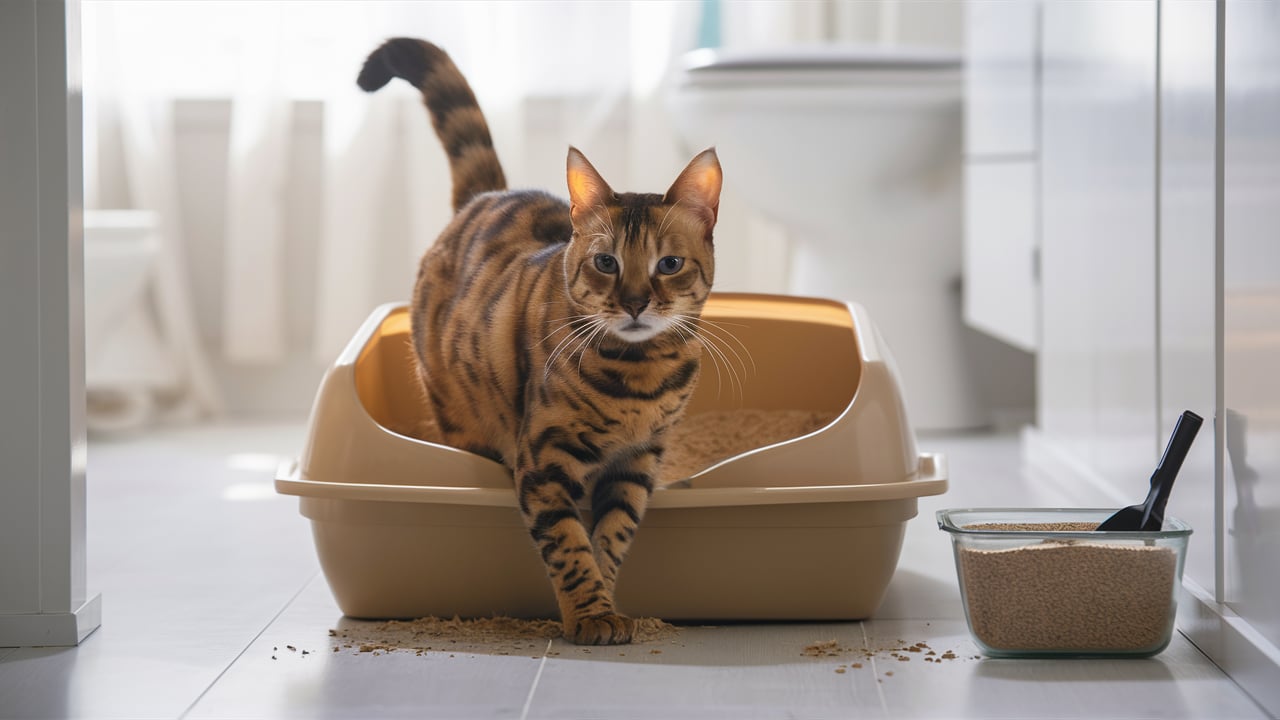Introduction
Bengal cats are truly stunning creatures, blending the appearance of a wildcat with the temperament of a domestic feline. With their exotic coats and playful personalities, it’s no wonder that these cats have captured the hearts of many cat lovers. But the question remains: are Bengal cats good pets? This comprehensive guide aims to explore every facet of owning a Bengal cat, from their unique characteristics to their care requirements, helping you determine if they’re the right pet for you.
History of the Bengal Cat
The Origins of the Bengal
The Bengal cat is a relatively new breed that originated in the 1960s when Jean Mill, an American breeder, crossed a domestic cat with an Asian leopard cat. The goal was to create a breed with the stunning coat of a wild cat but the temperament of a domestic cat.
The Evolution of the Breed
Over the years, selective breeding refined the Bengal’s appearance and personality traits, leading to the affectionate, energetic cats we know today. The breed gained recognition from The International Cat Association (TICA) in the 1980s and has since become a favorite among cat enthusiasts.
Physical Characteristics of Bengal Cats
The Exotic Coat
One of the most distinguishing features of Bengal cats is their luxurious coat, which comes in various colors and patterns, including spotted and marbled. This coat is not only beautiful but also soft to the touch, often compared to that of a rabbit or mink.
Size and Build
Bengal cats are medium to large-sized cats, with males typically weighing between 10 to 15 pounds and females between 8 to 12 pounds. They have a muscular build, which contributes to their athleticism and agility.
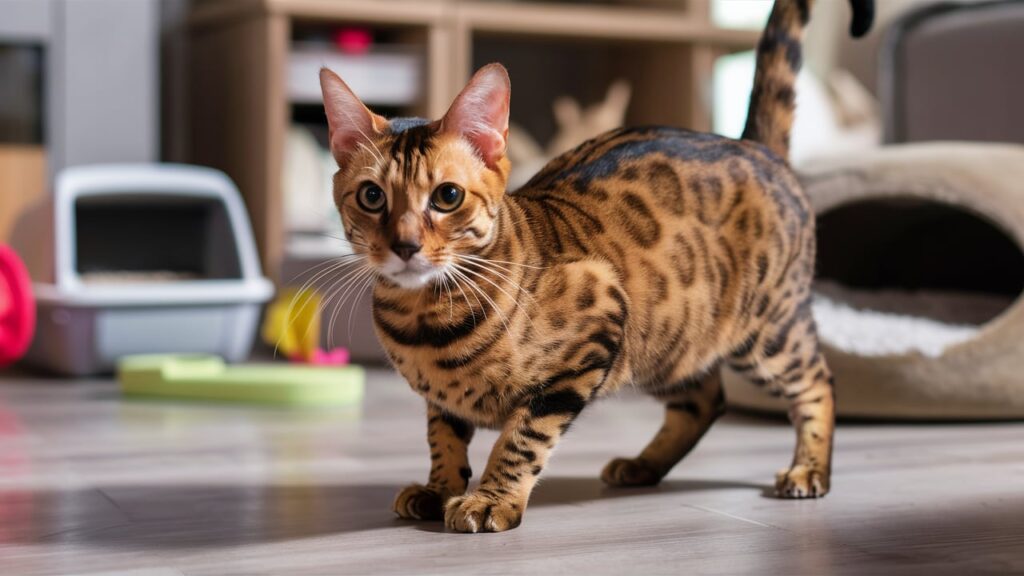
Unique Markings
Each Bengal cat has a unique pattern, making them easily identifiable. Their markings are reminiscent of those seen in wild leopards and ocelots, adding to their exotic appeal.
Temperament and Behavior
Playful Nature
Bengal cats are famous for being lively and playful animals. They love to engage in interactive play and can often be found chasing toys, climbing, and exploring their surroundings.
Intelligence and Curiosity
These cats are very smart and interested; they frequently show signs of learning to open doors, turn on taps, and even fetch. Their intelligence makes them easy to train but also requires mental stimulation to keep them happy.
Social Needs
Bengals are social animals that thrive on interaction with their human companions. They enjoy being part of family activities and can become lonely if left alone for extended periods.
Living with a Bengal Cat
Suitable Living Environments
Bengal cats can adapt to various living situations, but they thrive in environments where they have plenty of space to play and explore. A home with access to the outdoors or a cat-safe balcony can be ideal for them.
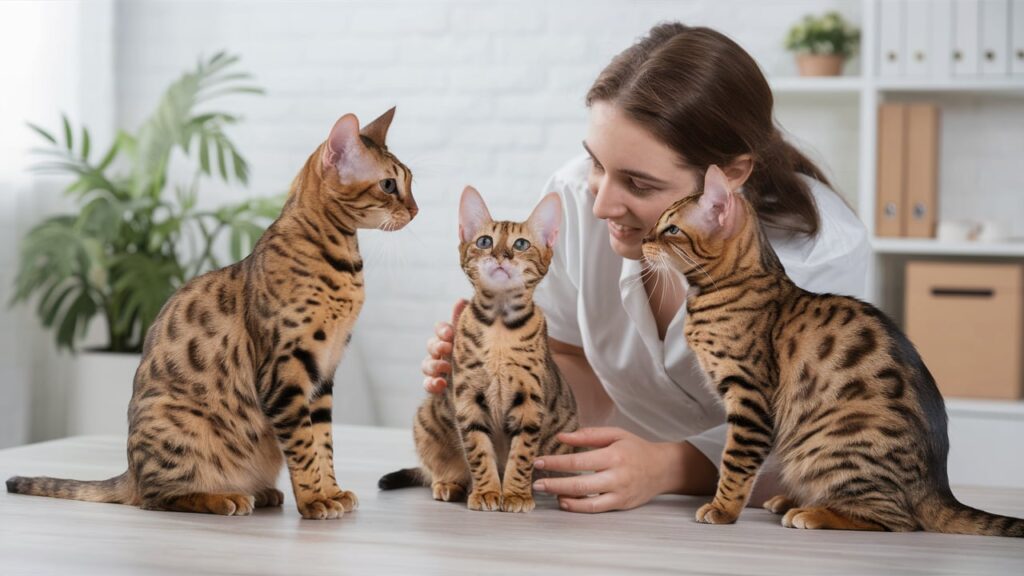
Interaction with Other Pets
Bengals generally get along well with other pets, including dogs and other cats, especially if they’re introduced at a young age. However, their high energy levels might be overwhelming for some pets.
Bengals and Children
These cats can be excellent companions for children, as they are playful and affectionate. However, it’s essential to teach children how to interact with pets respectfully to ensure a positive relationship.
Caring for Your Bengal Cat
Dietary Needs
Bengals require a balanced diet rich in protein to maintain their energy levels and muscular build. High-quality cat food, supplemented with occasional treats of cooked meat or fish, can keep them healthy.
Grooming Requirements
Bengal cats have a beautiful coat, but they require little attention in terms of grooming. Regular brushing can help remove loose hair and keep their coat shiny and soft. The picture below is also a Bengal cat breed.
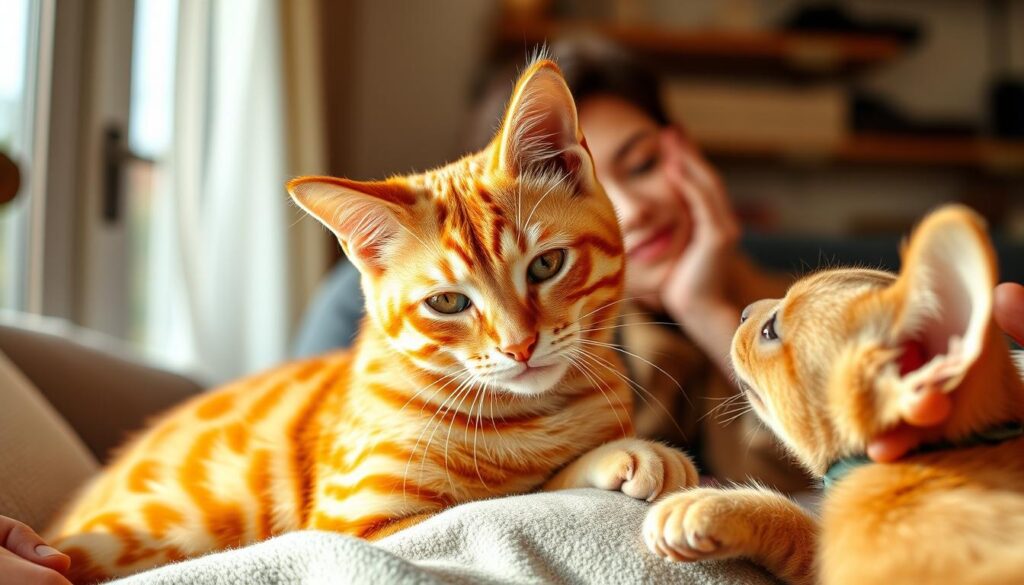
Exercise and Play
Bengals are active cats that need plenty of exercise and playtime to stay happy and healthy. Interactive toys, climbing trees, and daily play sessions can help meet their physical and mental needs.
Health and Wellness
Common Health Issues
Bengal cats are generally healthy, however, they can be sensitive to specific conditions such as progressive retinal atrophy, hypertrophic cardiomyopathy, and hip dysplasia. Frequent veterinary examinations are essential for the early diagnosis and management of these illnesses. Read questions about hypoallergenic
Preventative Care
Preventative care, including vaccinations, parasite control, and regular dental check-ups, is essential for keeping your Bengal cat healthy.
Lifespan
With proper care, Bengal cats can live up to 15 years or more, providing many years of companionship.
Training a Bengal Cat
Litter Training
Bengal cats are usually easy to litter train, especially when started at a young age. For litter training to be successful, consistency and positive reinforcement are essential.
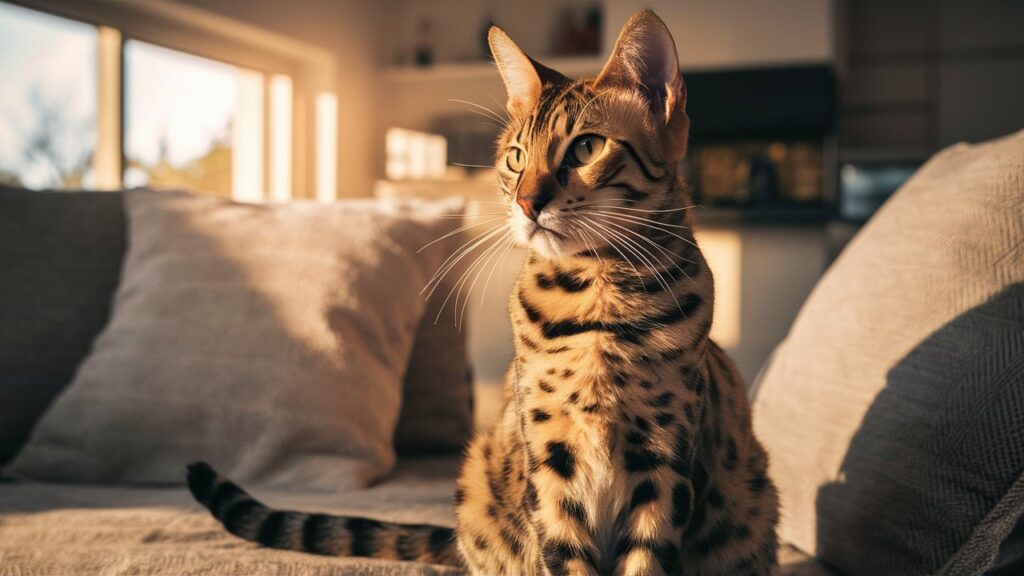
Behavioral Training
Due to their intelligence, Bengals can be trained to exhibit good behavior, such as scratching posts instead of furniture and using designated areas for climbing.
Advanced Tricks
Many Bengal owners enjoy teaching their cats advanced tricks like fetching, walking on a leash, or even swimming, as some Bengals have a natural affinity for water.
The Cost of Owning a Bengal Cat
Initial Purchase Price
The cost of a Bengal cat can vary widely, ranging from $1,000 to $3,000, depending on the breeder, lineage, and coat quality.
Ongoing Expenses
In addition to the initial purchase price, potential owners should consider ongoing expenses, including food, veterinary care, grooming supplies, and toys.
Legal Considerations
Bengal Cat Ownership Laws
In some regions, there are specific laws and regulations regarding the ownership of Bengal cats, particularly those with a higher percentage of wild ancestry.It’s crucial that you get informed about local rules before adopting a Bengal.
Breeder Regulations
Choosing a reputable breeder who follows ethical breeding practices is crucial to ensure the health and well-being of your Bengal cat.
Pros and Cons of Owning a Bengal Cat
Owning a Bengal cat can be a rewarding experience, but it’s essential to weigh the pros and cons. Bengals are lovely, smart, and loving, but they also need a lot of care and attention.
Conclusion
Bengal cats are a unique and captivating breed that can make excellent pets for the right family. Their exotic looks, playful nature, and intelligence are just some of the qualities that make them stand out. However, potential owners should be prepared for the responsibility that comes with owning a Bengal cat, ensuring they provide a loving and stimulating environment for their furry friend. If you’re ready to commit to their care and needs, a Bengal cat could be the perfect addition to your home.
FAQs
Do Bengal cats get along with other pets?
Bengal cats are generally friendly and can get along well with other pets if properly introduced. Their playful nature makes them a good match for families with other animals.
Are Bengal cats hypoallergenic?
While no cat is completely hypoallergenic, Bengals are often a better choice for allergy sufferers due to their short, low-shedding coats.
How much exercise does a Bengal cat need?
Bengal cats are very energetic animals that need regular exercise and mental stimulation to keep them from becoming bored and acting out.
What is the lifespan of a Bengal cat?
With proper care, Bengal cats can live between 12 to 16 years, and some even longer.
Are Bengal cats good for families with children?
Yes, Bengal cats are generally good with children, especially when both are taught to interact respectfully.
